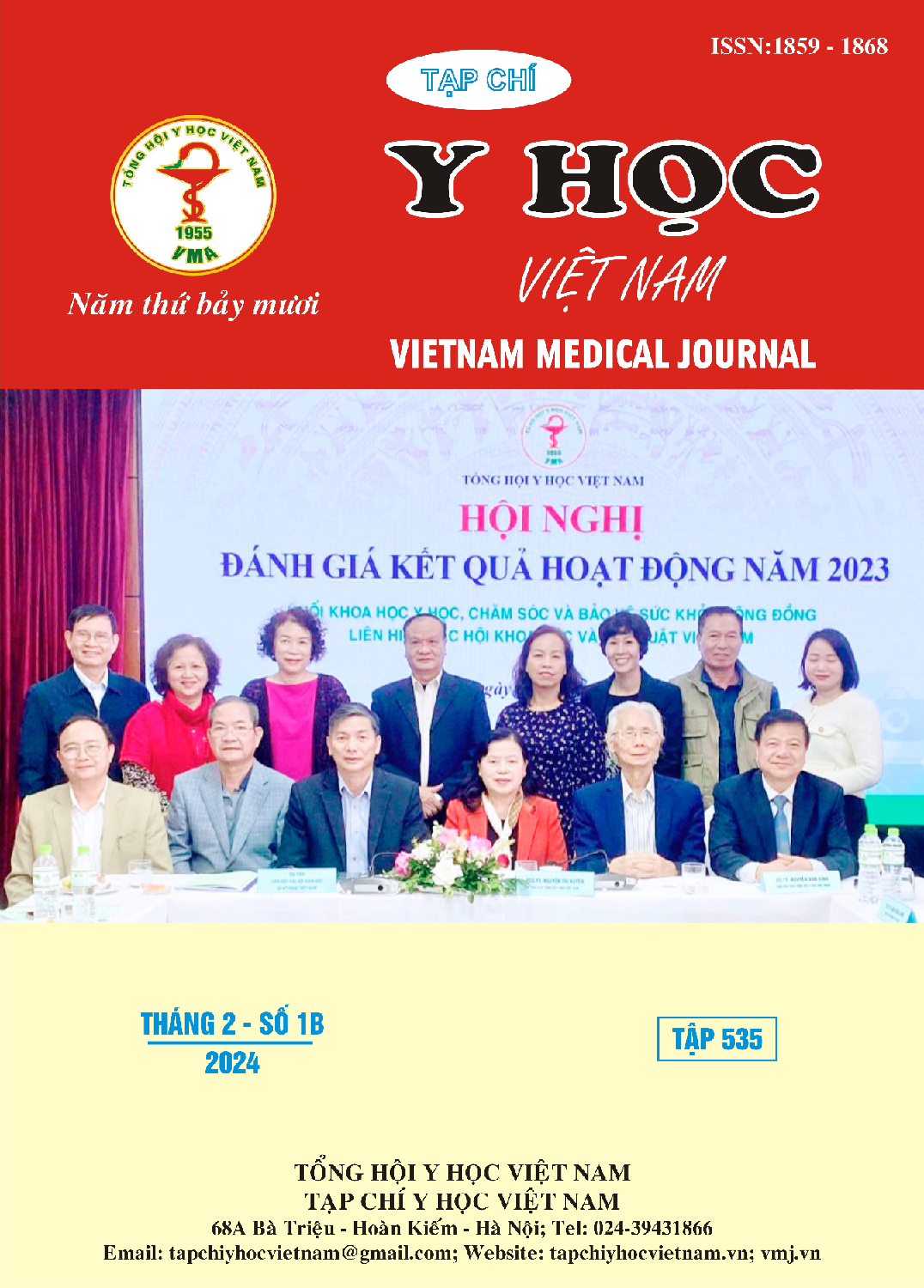TREATMENT OF ASSOCIATED BOTH - COLUMN ACETABULAR FRACTURES WITH OPEN REDUCTION AND INTERNAL FIXATION (ORIF) USING MODIFIED STOPPA APPROACH
Main Article Content
Abstract
Introduction: the associated both-column acetabular fractures (AO classification type B-C) is the serious injuries but uncommon. Fractures that displace acetabular articular surface > 2mm or cause hip instability require ORIF, esspecially with quadrilateral plate fractures. There are many approaches for treatment of associated acetabular both-column fractures, in this research we used Modified Stoppa approach. Methods: a prospective study 11 cases associated both - column acetabular fractures with ORIF using Modified Stoppa approach in Lower Limb Deparment, Hospital For Traumatology and Orthopaedic HCMC since January 2023 to September 2023, some cases have fragments spread to illiac wing, we combined with lateral window to control these fractures. Evaluated the anatomic reduction after operation based on the criteria of Matta, functional outcome was evaluated with the Merle d’Aubigne score. Results: 11 cases included 6 males and 5 females; age range from 19 to 72 year-old; the common mechanism is fall from height (6 cases); 7 of 11 cases involved comminuted quadrilateral fractures that caused the femoral head move into illiac fossa causing central hip dislocation; all of patiens underwent ORIF with plates and screws using Modified Stoppa incision that can combined lateral window if necessary; 8 patients were reduced fragments well based on Matta criteria (the articular surface displacement ≤ 3mm), 3 cases also > 3mm joint surface displacement due to comminuted fractures, so it was difficult to correct the fracture; several patients have had good outcome, Merle d’Aubigne score got over 10 point after 6 months. Conclusions: the associated both-column acetabular fractures (AO classification type B-C) cause hip instability require open reduction and internal fixation (ORIF) to restore anatomic acetabulum. Modified Stoppa approach is one of options of anterior incision for associated both-column acetabular fracture fixation because of widely observation, we can observed and reduced fragments of quadrilateral plate easier.
Article Details
References
2. Marvin Tile DLH, James F. Kellam, Mark Vrahas. Fractures of the Pelvis and Acetabulum: Principles and Methods of Management—Fourth Edition. vol 2. 2023.
3. Kim HY, Yang DS, Park CK, Choy WS. Modified Stoppa approach for surgical treatment of acetabular fracture. Clin Orthop Surg. Mar 2015;7(1):29-38. doi:10.4055/cios.2015.7.1.29
4. Chen Z, Yang H, Wu Z, et al. A combination of the modified Stoppa approach and the iliac fossa approach in treating compound acetabular fractures by using an anterior ilioischial plate. Acta Orthop Belg. Jun 2019;85(2):182-191.
5. Yang Y, Zou C, Fang Y. The Stoppa combined with iliac fossa approach for the treatment of both-column acetabular fractures. Journal of Orthopaedic Surgery and Research. 2020/12/07 2020;15(1):588. doi:10.1186/s13018-020-02133-3
6. Pierannunzii L. Acetabular both-column fractures: Essentials of operative management. 2010.
7. Kilinc CY, Acan AE, Gultac E, Kilinc RM, Hapa O, Aydogan NH. Treatment results for acetabulum fractures using the modified Stoppa approach. Acta Orthop Traumatol Turc. Jan 2019;53(1):6-14. doi:10.1016/j.aott.2018.11.003
8. Yao S, Chen K, Ji Y, et al. Supra-ilioinguinal versus modified Stoppa approach in the treatment of acetabular fractures: reduction quality and early clinical results of a retrospective study. J Orthop Surg Res. Nov 14 2019;14(1):364. doi:10.1186/s13018-019-1428-y


